Roger J. Wendell
Defending 3.8 Billion Years of Organic EvolutionSM



My family and I have lived in Colorado most of our lives and have seen some pretty big snowstorms along the Front Range (That's the official geological name for the portion of the Rocky Mountains that cities like Fort Collins, Boulder, Denver, and Colorado Springs back up against). So, this is a kind of a collection of various pix from the various storms that I've survived so far...

|
Click Here for my page on skiing... |

|
Click Here for my page about Snow Caves and Quinzhees... |

|
Click Here for my skiing experience at Margy's Hut and the house of Hunter S. Thompson! |
FPS Snow Blower (Troy-Bilt Storm 2410)
March 13, 2019:
Colorado's so-called "Land Hurricane" or "Bomb Cyclone?"
Definately overstated by media but for what purpose? Seemed to me to
be just like any other March snowstorm along Colorado's Front Range...

|
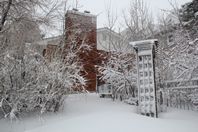
|
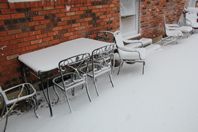
|

|
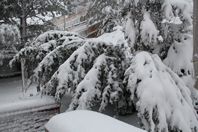
|

April 30, 2017:
The Denver area was hit with a moderate storm at a time when I was living between two homes in Genesee and Green Mountain. Both are located
immediately west of Denver and as you can see, from these photos, were hit pretty hard with almost two feet (0.6 metres) of accumulation in Genesee...
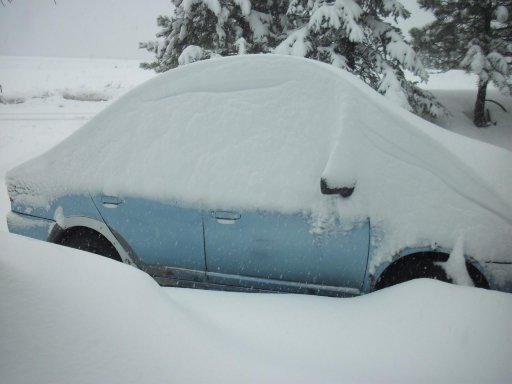 Trying to find the cars! |
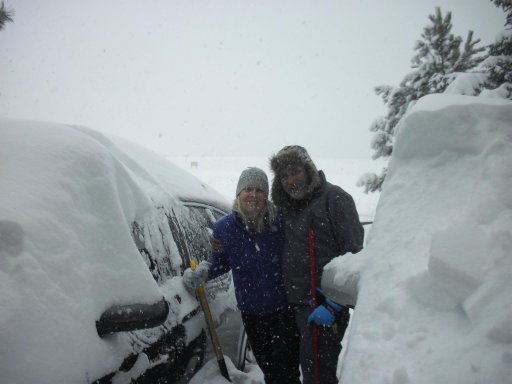 Digging out the cars... |
 No breakfast on the deck this morning! |
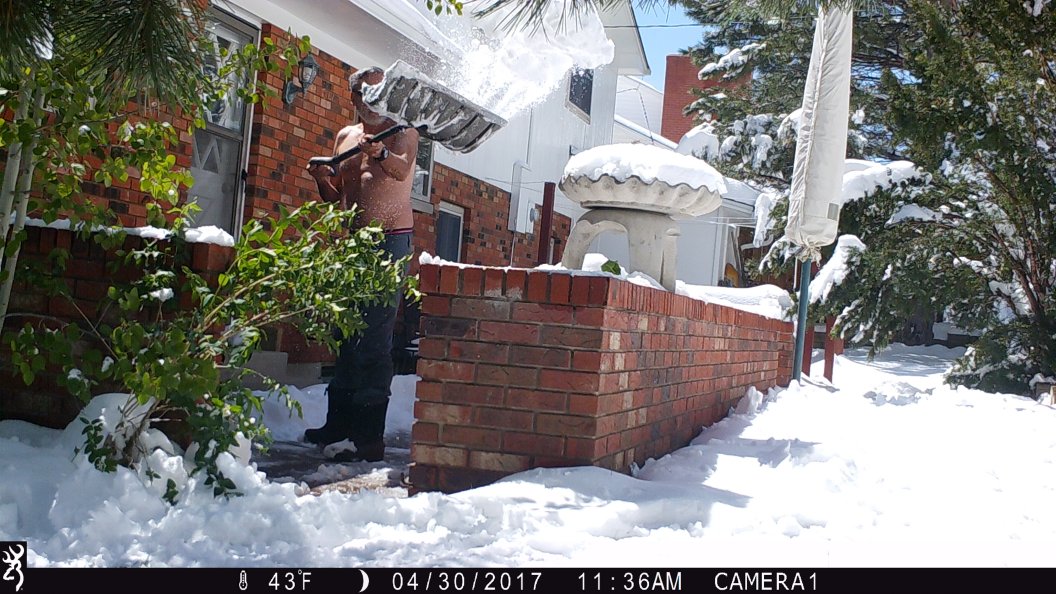 Still shoveling the next day... (taken by my game camera) |

Multiple Years:
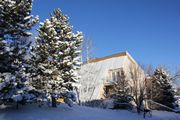 2014 - Sloughing off |
 2015 - snow on telephone wire |
 2016 - Nearly 41 centimetres (16 inches) |

2013:
Late March snowfall:
Nearly 38 centimetres (almost 15 inches) fell before I took this photo on March 24th. By the time I had taken it a a little settling had taken place but it was still pretty deep!
This bush was a bit strange in that it kept about a third of its leaves intact throughout the entire winter! I have not seen this before - especially with so much green left on the leaves. Could it be due to milder temperatures from the effects of Climate Change?

2012:
AIARE Level 1 Avalance Training and another storm hits our backyard and DIA!
WARNING: Avalanche safety is serious business - you need to undertake a lot more study and training than simply looking at these pix or watching a few videos on the internet! This particular set of pictures and video link is from a very small portion of the AIARES level one training session that I attended through the Colorado Mountain Club. I encourage you to contact the Colorado Mountain Club, the American Institute for Avalanche Research and Education, or other credible and accredited organizations to find out how you can participate in similar training.


|
Click Here for one of my YouTube videos during an AIARE Level 1 Avalanche training session sponsored by the Colorado Mountain Club... |
2011:
A regular winter's day near Marble, Colorado
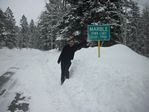 Me |
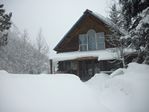 Cabin |
 Main water valve |
 Winnebago |
 Keeping warm with a pellet stove |
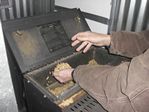 Wood pellets @ $0.10/pound |

2010:
Snowpack monitoring station at Berthoud, Colorado

|

|
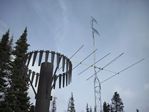
|
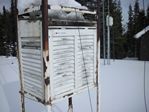
|

|

|

|
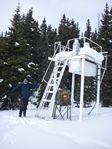
|

|


|
Click Here for my YouTube video of snowpack monitoring station at Berthoud Pass, Colorado |
2009:
Although this wasn't the heaviest snowfall of the season it was certainly the wettest! Many trees were bent and bowed to the ground but will recover by the end of summer. While most of the Denver area saw this storm as rain those of us in the foothills and canyons saw it as continuous snowfall from Friday morning through Saturday afternoon. Accumulations were over 100 centimetres, in some areas, but the high moisture content quickly collapsed the snowpack...

|

|
 14 inches (35 centimetres) |
 Birdbath and feeder |
 Outdoor grill |


|
Click Here for a YouTube video of the inside of a snowblower... |
2006:
Christmas 2006 was especially brutal for Denver and Colorado's Front Range. The first wave started on December 20th and dumped an average of two feet (61 centimetres) all over the metro area. The second wave hit just a week later, on December 28th, dumping another foot. The first wave completely crippled Denver, stranding thousands of air passangers at our relatively new "storm immune" airport (a speculators' and developers' dream that was fought against in the early 90s...). Anyway, I was in Nevada during the first wave but somehow managed to fly home in time shovel out of the second one. The two photos at the right show how much snow was still left the following week after the second storm!
 Here's a typical dusting! |
 Christmas 2006 |
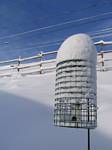
|
 Narrow Sidewalks |
 Trash collection... |


|
Click Here for my page on Snow Caves... |
Snow tube around our telephone wire:
 At least 5 inches diameter! |
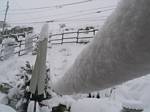 Looking up hill |
 Side view |
 Toward house |
On October 26, 2006 we had a surprisingly wet and heavy snowfall up here on Green Mountain. For reasons only known to physics our telephone line, and no other wires, accumulated this huge, tube-like coating of snow over most of it's length. Being really heavy, it pulled the line down to head-level in the backyard - springing back up when I removed the snow... |


|
Click Here for my page about our Green Mountain neighborhood... |
My Cars

April 10/11, 2005 (Sunday/Monday)
This storm was predicted well in advance yet still caused considerable disruption. At our house, which is about 1,000 feet higher than Denver, we and our neighbors recorded 19 inches as an average depth across our yards. Although it was Amby's birthday she was away in North Carolina so all we were able to take a photo of was her car (it's in the lower left-hand corner of this series)...

On April 9th, 2005 (a day before the big storm) Tami took a picture of one of the two mother foxes leaving their den in our backyard. It was about 70 degrees out and we counted a total of 9 "kits" following the moms around that morning. We have photos of other animals on our Backyard Wildlife page...

A bit of fun!
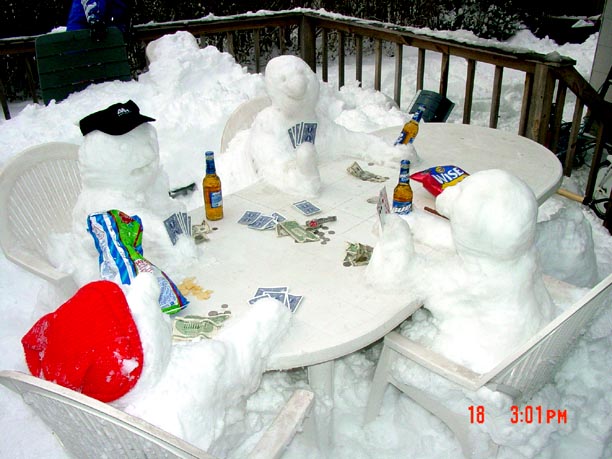
|
| (Posted with permission) - Snowmen playing poker by Jon Tater and his children during the winter of 2003/04 - Commack, NY |

Blizzard of March 18/19, 2003
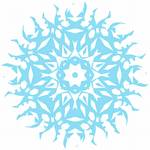
|

|
Click Here for a Word Document containing the pix of the March 2003 storm at my house... |

The Blizzard of '82
(Christmas 1982)
This was the "big one" that old-timers still talk about. Most of the Denver
area was paralyzed for nearly three days. We lived near Cherry Creek Reservoir,
at the time, and I-225 was impassable. We weren't able to heat our house because
the electricity went out for many hours. Luckily we had a small fireplace in the
living room that added a little comfort. Unfortunately the accumulated snow was
so deep I wasn't able to get out and about to take too many photos at the time...
 Our 1973 Honda Civic |
 Steve Archuleta |
 Motorcycle S. Nile St |
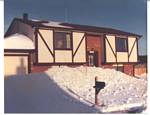 Our Grand Drive house* |
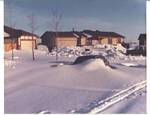 East Grand Drive Aurora |
*If you click on the 4th photo, "Our Grand Drive house," you'll see Tami in the window holding baby 'Ogy...

Shoveling Snow Without a Shirt!

|
In 1975, before Global Warming really started to take off, I was fond of shoveling and completing other winter chores without a shirt! This photo was taken in front of my parent's home at 11590 East Kentucky Avenue, Aurora, Colorado - January, 1975 |

The Blizzard of '72
It was sometime late in the 1972 school year, at Cherry Creek High School, that another huge
storm shut things down for awhile. Back then snowstorms seemed rather routine since the Denver
area was relatively small so there was very little wind break and virtually no "heat island"
effect from asphalt and building structures. I mostly remember the blizzard of '72 because a
number of students tried to create an annual "Blizzard Day" (pronounced "Bli" as in "lid" and "Zard"
as in "lard") as an excuse to miss class. The tradition, I'm sure, was dead by the '74 school year...Anyway, no pix from '72 yet but I'll keep looking!

|
Click Here for my video about snow plowing a parking lot... |


Red, Pink, and Watermelon Snow:
Throughout most of my life, in Colorado, I've encountered what we call "watermelon snow" at higher elevations where there's been no fresh snowfall, for a few days, and the temperature has started to warm up a bit. The pink or red color of the snow, even in small patches, is easily seen from a distance and sometime smells, to me, like watermelon (although that may be more of a physcological influence than actual chemical sensation). Anyway, science tells us that this type of snow is caused from Algal cells that are actually living on the surface of the snow.Caution! There's every indication that eating "watermelon" snow, or using it to make water or cook in, is hazardous to your health - avoid ingesting it!!
| I took these photos near the 13,215' summit of Hassell Peak in July, 2006: |

|
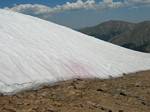
|

|

|
Wayne's Word, an online textbook of natural history,
had this to say about watermelon snow:
"The bright red carotenoid pigment inside the cells of snow algae is similar to that found in tomatoes, red peppers and in many colorful flowers and autumn leaves. Carotenoids may also be orange, yellow or yellow-green as in carrots and the fleshy meat of avocados. They are also found in a variety of animals, including the exoskeletons of shrimp, crab and lobsters, brightly colored corals, skins of fish and amphibians, egg yolks, and pink plumage of flamingos. Since flamingos cannot synthesize carotenoids, they are often fed shrimp in captivity to intensify the color.""Carotenoid pigments presumably help to protect the delicate cells of snow algae from intense solar radiation at the surface of the snow. Because of the thin layer of atmosphere for filtration, alpine snowbanks are subjected to more damaging ultraviolet radiation than at lower elevations. Cells of snow algae (and other particulate matter in snow fields) may also concentrate airborne radiation. This phenomenon was apparently discovered by a uranium prospector who inadvertently let his coffee pot go dry after melting snow in it and heard his Geiger counter nearby begin to click."

1913: Some Denver Snowstorm History

Links:
|
|

 Back to Roger J. Wendell's Home Page...
Back to Roger J. Wendell's Home Page...
Abbey |
About |
Blog |
Contacting
Me |
Copyright |
Disclaimer |
Donate |
Guest
Book |
Home |
Links |
Site
Index |
Solutions |
Terms,
Conditions
and
Fair
Use |
What's
Changed
or
New?
Copyright
© 1955 -